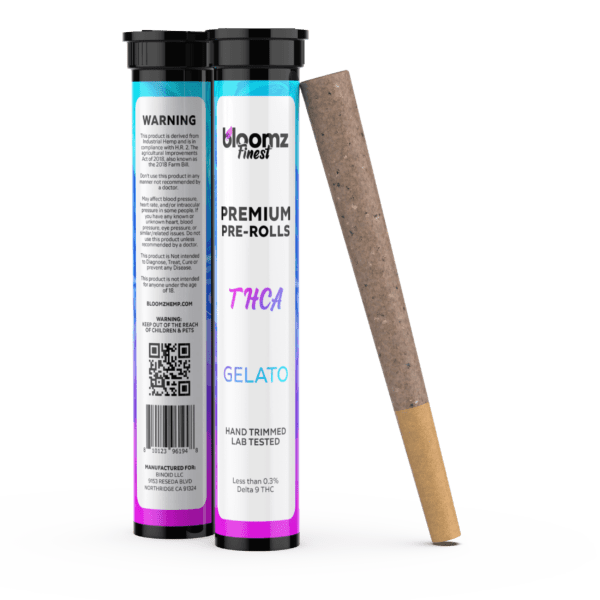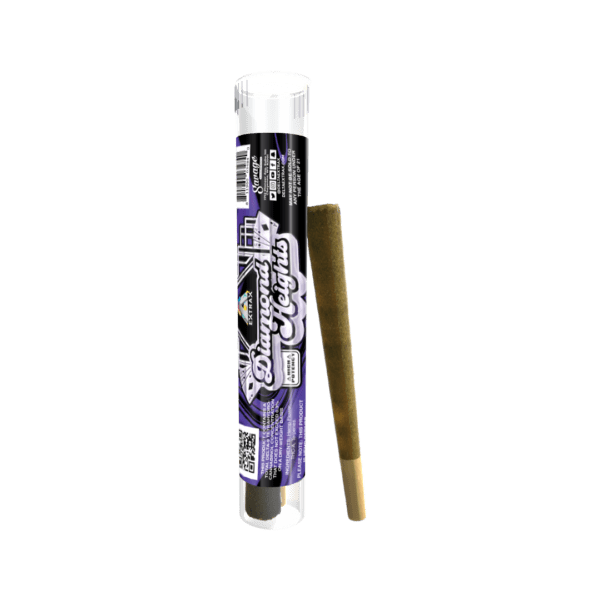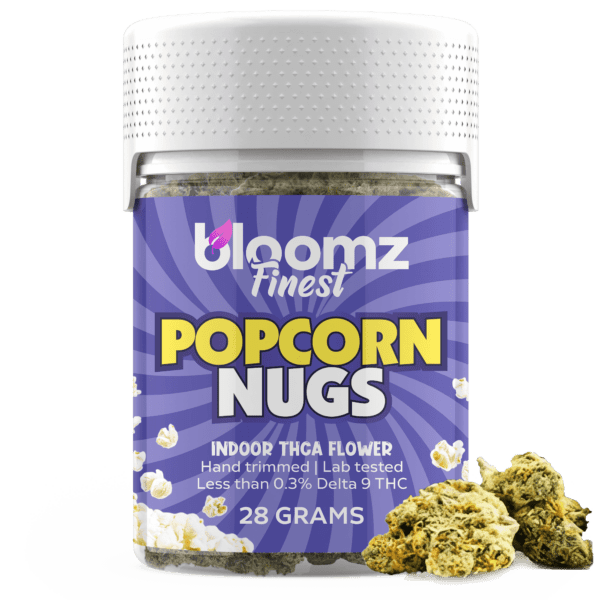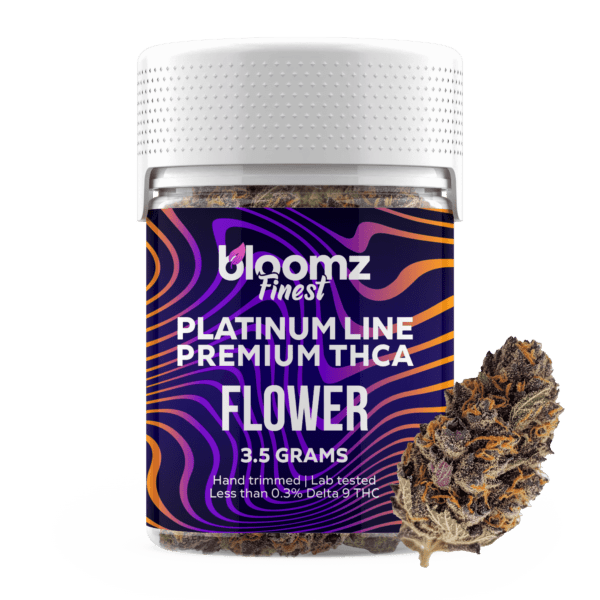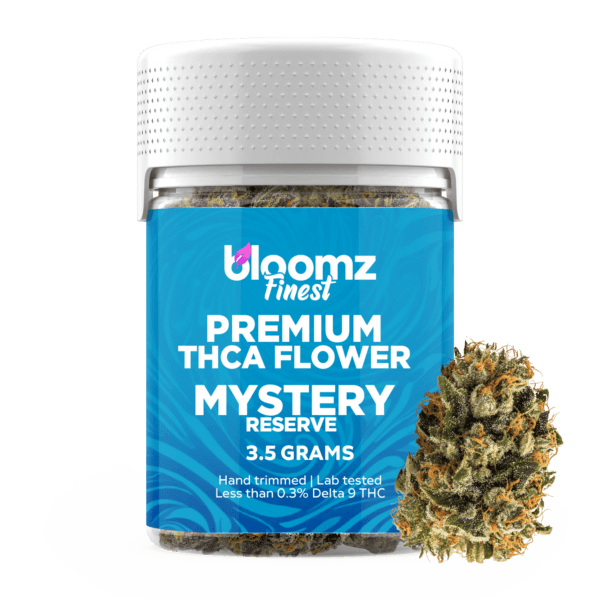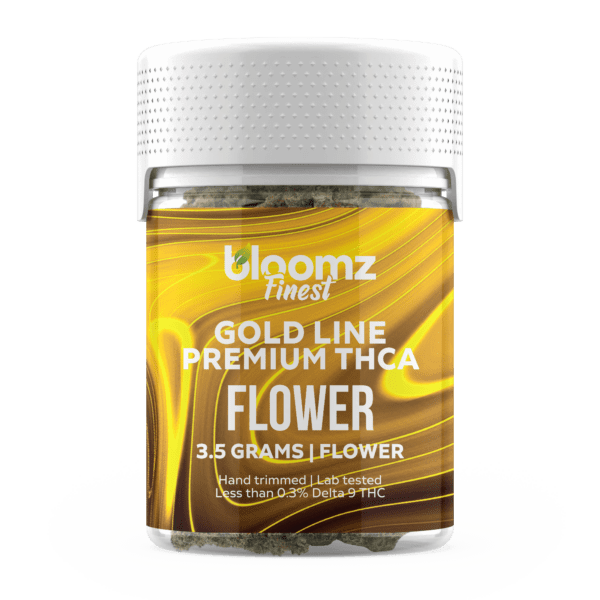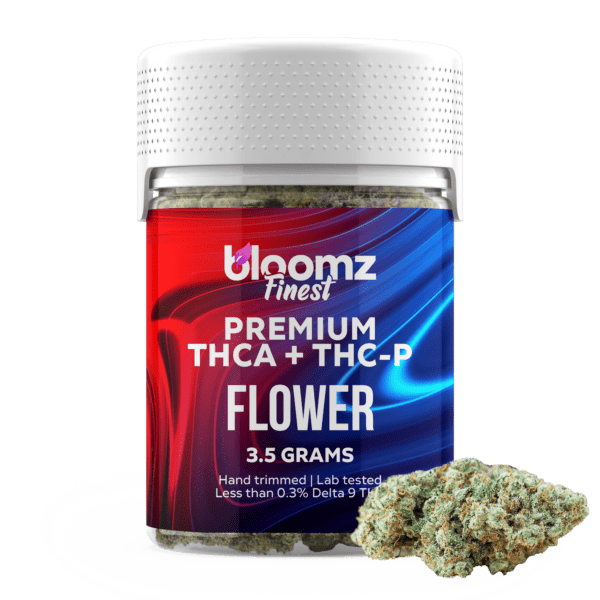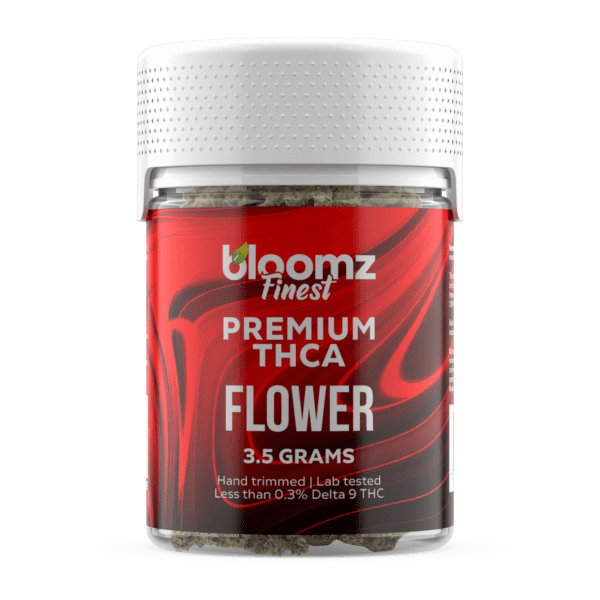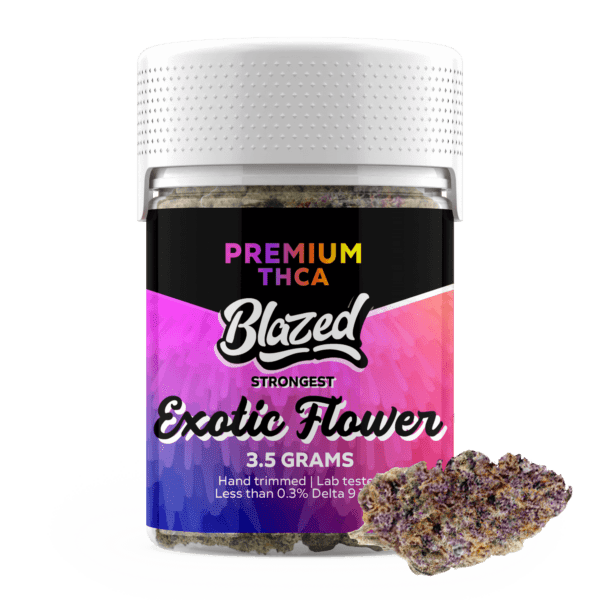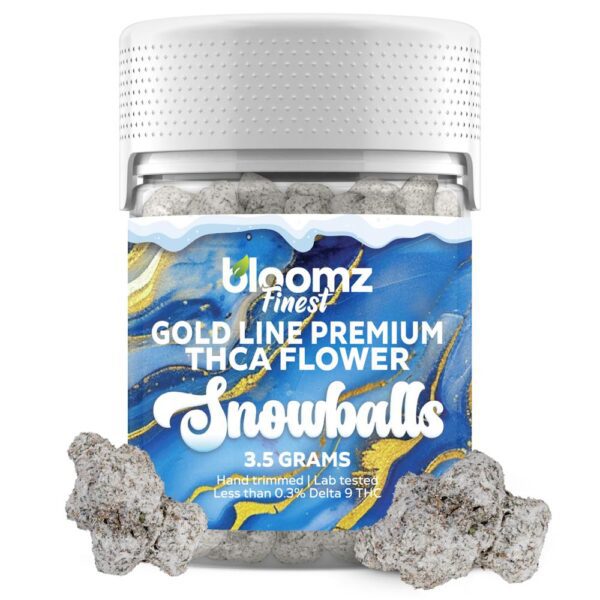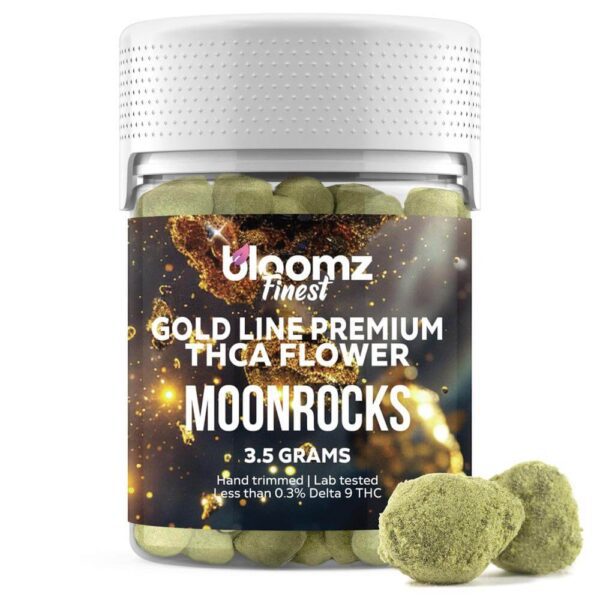There’s an undeniable appeal to the simplicity and convenience of a pre-roll. Ready to go at a moment’s notice, it represents one of the most classic and accessible ways to enjoy cannabis flower. But behind that perfectly cylindrical, ready-to-light form lies a detailed process that bridges careful cultivation with precise manufacturing. Crafting a truly excellent THCA pre-roll – one that burns evenly, tastes great, and delivers the desired effects – involves much more than just shredding some plant matter and stuffing it into paper. It’s a journey that starts with quality flower rich in THCA and culminates in a consistently well-constructed final product. Now, if you ever wondered what steps ensure that pre-roll provides a smooth, satisfying experience every time, we’re gonna be unrolling the story and also explore the meticulous process behind making and packaging high-quality THCA pre-rolls.
To Buy THCA Pre-Rolls Click Here
Recommended products
A Quick Insight into What THCA Pre-Rolls are
THCA pre-rolls are ready-to-smoke joints filled with cannabis flower that’s rich in tetrahydrocannabinolic acid. You see, THCA is one of the many cannabinoids found naturally in the raw cannabis plant, and it’s particularly noteworthy because it’s the non-psychoactive precursor to Delta-9 THC, the compound most commonly associated with the traditional cannabis ‘high’. The magic happens through a process called decarboxylation, which occurs when you apply heat – like lighting the pre-roll. This heat converts the THCA into Delta-9 THC, unlocking the potential for those sought-after effects many consumers enjoy. Think of THCA as the potential energy, waiting for a spark to transform.
The appeal of THCA pre-rolls, in general, lies in their sheer convenience. They eliminate the need for grinders, rolling papers, filters, and the skill (or patience) required to roll a consistent, even-burning joint. For both newcomers and seasoned users, grabbing a perfectly constructed pre-roll saves time and effort, making the experience more accessible and immediate. Essentially, it’s about having a top-tier, potent experience neatly packaged and ready to go, simplifying enjoyment without sacrificing the quality or intensity desired from premium cannabis flower.
What is Initially Needed to Make THCA Pre-Rolls?
Producing high-caliber THCA pre-rolls requires a specific set of ingredients, specialized equipment, and controlled processes designed for consistency and quality. It’s not simply about using leftover material; premium pre-rolls start with intentionally sourced or cultivated flower and rely on machinery and techniques that ensure uniformity from roll to roll. Setting up for production involves careful consideration of everything from the plant genetics to the final packaging components. Below is a detailed breakdown of the essential elements needed:
High-Quality, Compliant THCA Flower: The heart of the pre-roll is the cannabis flower itself. Key attributes include:
Potency & Compliance: Flower must be rich in tetrahydrocannabinolic acid while adhering strictly to legal limits for Delta-9 THC (typically below 0.3% by dry weight). Strain selection focuses on genetics known to produce high THCA levels.
Terpene Profile: A robust and appealing terpene profile is crucial for providing the desired aroma and flavor, significantly impacting the user experience.
Source Quality: While premium pre-rolls often use ground whole flower (from indoor, outdoor, or even boutique sources), others may utilize high-quality “smalls” (smaller buds) or meticulously processed trim from desirable strains. The source material must be clean, free of contaminants (pesticides, heavy metals, mold), properly dried, and expertly cured to ensure smoothness and optimal burn characteristics. Poorly cured or harsh flower cannot be hidden in a pre-roll.
Appropriate Moisture Content: THCA Flower must be at the ideal moisture level (typically 10-12%) before grinding – too dry and it becomes powdery and harsh; too wet and it grinds poorly, packs unevenly, and won’t burn correctly.
Cannabis Grinding Equipment: Achieving the perfect consistency is vital for a good burn. This requires:
Industrial Grinders: Capable of processing significant volumes of THCA flower consistently. Blade grinders are generally avoided as they can pulverize material unevenly and generate heat.
Burr Grinders or Low-RPM Shredders: These are often preferred as they provide a more uniform particle size without creating excessive dust or damaging trichomes unnecessarily through heat generation. The goal is a fluffy, homogenous grind – not powder, not coarse chunks. Screen selection within the grinder helps control particle size.
Pre-Rolled Cones or Rolling Papers & Filters: The vessel for the flower:
Quality Materials: Papers should be thin yet durable, made from materials that burn cleanly and evenly with minimal impact on flavor (common options include refined white/unbleached wood pulp, rice paper, hemp paper, or flax). Pre-formed cones offer efficiency and consistency in shape/size.
Filters/Crutches: Integrated filters (often made of paper or cardboard, sometimes glass or wood tips for premium options) provide structure, prevent material from entering the user’s mouth, and offer a comfortable holding point. Filter quality and design impact airflow.
Variety of Sizes: Cones and papers come in various standard sizes to produce different weight pre-rolls (e.g., 0.5g, 0.7g, 1.0g). Consistency in cone/paper supply is important for production uniformity.
Filling & Compacting Machinery: Essential for achieving consistency in weight and density:
Manual Jigs: Simple devices holding multiple cones upright for manual filling and packing. Labor-intensive but offer low start-up cost.
Semi-Automated “Knockboxes”: The most common type. These vibrating tables hold hundreds of cones in specialized trays. Ground THCA flower is spread over the top, and vibration helps fill the cones, followed by manual or semi-automated tamping/compacting stages.
Fully Automated Pre-Roll Machines: High-speed, complex machines that handle cone loading, filling, compacting, twisting/closing, and sometimes weighing and rejection of out-of-spec rolls. Offer high throughput but require significant investment and technical maintenance.
Compaction Tools: Dowels or specialized tamping tools used (manually or automated) to achieve the desired pack density consistently across the length of the pre-roll.
Finishing Station & Quality Control Tools: For completing and verifying the pre-rolls:
Closing Mechanism: Tools or machine parts for neatly closing the open end of the pre-roll (e.g., twisting the paper, creating a “Dutch crown” fold).
Precision Scales: Regularly calibrated scales accurate to at least 0.01g for weighing finished pre-rolls to ensure they meet target weight specifications.
Inspection Area: Well-lit area for visually inspecting finished rolls for flaws, consistency, and overall uality.
Controlled Production Environment: The entire process from grinding through packaging should occur in a clean, climate-controlled space (stable temperature and humidity) to:
Preserve flower quality (terpenes, moisture content).
Prevent contamination (dust, microbes, foreign materials).
Ensure consistent machine operation.
Provide a safe and comfortable working environment.
(Optional Components for Infused THCA Pre-Rolls): If creating enhanced pre-rolls:
High-THCA Concentrate: Low Delta-9 compliant options like pure THCA isolate powder, THCA distillate, compliant hash rosin, or other suitable extracts for infusion or coating. Must be tested for potency and safety (residual solvents).
High-Quality Kief: Clean, potent, low Delta-9 kief for external coating (similar to Moonrock production). Must be tested.
Infusion/Coating Equipment: Specialized tools or stations for accurately mixing concentrate with flower, injecting concentrate, or applying concentrate and kief to the exterior of the pre-roll without compromising its structure or burn quality. Requires additional SOPs and quality control.
Setting up requires careful selection of flower, appropriate machinery for processing and assembly, quality consumables (papers/cones), and a controlled environment to tie it all together.
Understanding the Entire THCA Pre-Rolls Process
Transforming carefully cultivated THCA flower into consistent, ready-to-enjoy pre-rolls involves a methodical manufacturing process that prioritizes uniformity, quality, and efficiency. While seemingly simple, each step – from preparing the flower to the final package – plays a critical role in determining the burn quality, flavor, and overall experience delivered by the finished product. For infused varieties, additional layers of complexity and precision are introduced. Here’s an overview of the typical workflow:
Sourcing or Cultivating High-Quality THCA Flower: The process begins with securing the primary ingredient. This involves either cultivating cannabis strains specifically for their high THCA content and suitable characteristics (density, terpenes) under controlled indoor or greenhouse conditions, or carefully sourcing compliant flower (whole buds, smalls, or premium trim) from reputable growers. Strict adherence to low Delta-9 THC limits is essential throughout.
Curing, Destemming, and Moisture Balancing: Once harvested and dried, the flower undergoes a crucial curing period (weeks to months) to develop its full flavor, aroma, and smooth smoking characteristics. Before grinding, large stems are meticulously removed as they burn poorly and affect taste. The cured flower’s moisture content is checked and potentially adjusted (e.g., using humidity packs or controlled rehydration) to reach the optimal level (usually 10-12%) for a perfect grind and pack.
Grinding and Homogenization: The prepared flower is processed through specialized cannabis grinders. The goal is not to create powder, but a consistent, fluffy grind with uniform particle size. This ensures even packing and consistent airflow through the THCA pre-roll. Different batches of flower (or different parts of the plant, like smalls vs. trim) might be blended post-grind to achieve greater homogeneity in potency and character for large production runs.
Preparing Cones/Papers: Empty pre-rolled cones are carefully loaded into the trays or magazines of the filling machine. If using rolling papers and filters (less common in mass production), they are prepared accordingly. Ensuring cones are undamaged and properly seated is crucial for efficient filling.
Filling and Compacting: This is the core manufacturing step, typically using semi-automated “knockbox” style machines or fully automated systems.
Filling: A precisely weighed amount of the ground, homogenized flower is distributed evenly across the tops of the cones held in the machine’s tray.
Vibration/Settling: The machine vibrates, causing the ground flower to settle down into the cones.
Compacting (Tamping): Critically important for burn quality. Specialized tools or automated mechanisms tamp the flower down within the cone to achieve a target density. This must be consistent along the entire length of the roll. Too loose, and it burns too fast and unevenly (“runs”). Too tight, and airflow is restricted, making it hard to draw. Achieving the “perfect pack” is a key quality parameter. Multiple stages of filling and tamping might be used.
Optional Infusion Process (For Infused Pre-Rolls): If creating infused THCA pre-rolls, this step is integrated carefully:
Internal Infusion: This might involve mixing powdered THCA isolate or small amounts of concentrate (like distillate or terp sauce) evenly with the ground flower before it goes into the filling machine. Alternatively, some automated systems can inject a core of concentrate down the center of the pre-roll during or after filling. Precision is needed to ensure even distribution and avoid clogging or burn issues.
External Coating: For kief-coated or “painted” pre-rolls, the finished standard pre-roll is treated. A thin layer of sticky concentrate (like warmed distillate or rosin) is carefully applied to the outside paper (often by brushing or rolling), and then the sticky pre-roll is immediately rolled in high-quality kief until fully coated. This requires a separate station and careful handling.
Finishing and Closing: Once filled (and potentially infused), the open end of the THCA pre-roll needs to be neatly closed to prevent spillage and provide a finished appearance. Common methods include:
Twisting: Simply twisting the excess paper at the tip.
Folding/Tucking: Folding the excess paper inwards for a flat top.
“Dutch Crown”: A specific folding technique creating a flat, visually appealing crown at the tip. Automated machines often perform this step.
Quality Control Checks: Finished THCA pre-rolls undergo several checks:
Weight Verification: Random or 100% weighing to ensure target fill weight (+/- tolerance).
Visual Inspection: Checking for physical defects like tears in the paper, improper closing, uneven compaction (visible lumps or voids), loose filters, or major inconsistencies in size/shape. For infused rolls, checking coating uniformity or signs of leakage.
Density/Draw Test (Sample Basis): Some operations perform draw tests on samples using specialized equipment or even destructive burn tests to verify consistent airflow and burn rate.
Lab Testing (Final Product): Sending representative samples of the finished batch for final potency verification (THCA, Delta-9 compliance) and safety screening.
Packaging: The final step involves carefully placing the quality-approved THCA pre-rolls into their retail packaging (jars, tubes, tubs, boxes), often done by hand or using specialized packaging machinery, ensuring they are protected from damage and environmental factors.
Why is Each Step Vital to the THCA Pre-Rolls Making Process Anyways?
Producing a high-quality THCA pre-roll, despite its apparent simplicity, is a process where attention to detail at every stage directly translates to the end-user’s satisfaction. Each step builds upon the last, and shortcomings are easily revealed in the final burn and experience. Getting a good grasp when it comes to the critical role of each phase highlights why consistent execution is paramount, so let’s get to it:
High-Quality THCA Flower Sourcing/Cultivation: This is the fundamental determinant of the THCA pre-roll’s intrinsic quality. The flower provides the cannabinoids (primarily THCA), the terpenes (flavor and aroma), and the base material. Using clean, potent, flavorful, and properly cured flower results in a smooth, enjoyable pre-roll. Using low-quality, harsh, or improperly cured material guarantees a poor experience, regardless of how well the pre-roll is constructed.
Proper Curing, Destemming & Moisture Content: Curing develops smoothness and flavor. Removing stems prevents canoeing (uneven burning down one side) and harshness. Achieving the correct moisture content (10-12%) is essential for a uniform grind – too dry leads to powder and fast burning, too wet leads to clumping, uneven packing, and difficulty staying lit.
Consistent Grinding: The particle size of the ground flower dictates airflow. Too fine (powdery) restricts airflow and can burn harshly. Too coarse results in gaps, uneven packing, and rapid, uneven burning (canoeing). A consistent, fluffy grind is the key to enabling a smooth draw and steady burn.
Quality Papers/Cones & Filters: The rolling paper directly impacts taste and burn rate. Cheap, thick papers impart a noticeable papery taste and can burn unevenly. Quality, thin papers burn cleanly. The filter provides structure and ensures a comfortable draw without inhaling loose material; a poorly made or loose filter ruins the experience.
Accurate Filling & Consistent Compaction: This is perhaps the most critical manufacturing step for user experience. Under-filled rolls feel flimsy and burn too quickly. Overly dense packing restricts airflow, making the pre-roll difficult or impossible to smoke. Consistent compaction along the entire length is vital to prevent canoeing and ensure a smooth, even burn from start to finish. Machines are used specifically to achieve this consistency at scale.
Careful Infusion (If Applicable): For infused THCA pre-rolls, the quality and application of the infusion are crucial. Using clean, potent, safe concentrates/kief is mandatory. Applying them evenly (whether mixed in, injected, or coated) ensures consistent potency and prevents issues like clogging, uneven burning, or excessive messiness. Poor infusion techniques can ruin an otherwise good pre-roll.
Neat Finishing/Closing: Properly closing the tip prevents the ground flower from spilling out during packaging and handling, maintaining the product’s integrity and presentation. A sloppy finish looks unprofessional.
Rigorous Quality Control: QC steps (weighing, visual inspection, potentially burn tests) are essential for catching errors in the manufacturing process (e.g., under-filled rolls, poor compaction, damaged cones) before they reach the consumer. This ensures batch consistency and upholds brand quality standards. Final lab testing verifies potency and safety claims.
Protective Packaging: THCA Pre-rolls are relatively fragile. Packaging must protect them from being crushed, bent, or broken. It also needs to maintain freshness by providing an airtight seal (preventing the flower from drying out or terpenes from evaporating) and often includes child-resistant features for compliance and safety. Poor packaging leads to damaged goods and loss of quality.
Ultimately, every step contributes to delivering a THCA pre-roll that lights easily, draws smoothly, burns evenly, tastes great, and provides the expected potency and effects – the hallmarks of a well-crafted product.
How is the Packaging Itself for THCA Pre-Rolls Made and Designed?
Packaging for THCA pre-rolls serves multiple critical functions beyond simply holding the product. It must provide robust physical protection against crushing or bending, maintain freshness by creating an airtight and often light-resistant barrier, control odor, comply with strict regulatory requirements (child-resistance, tamper-evidence, labeling), and effectively present the brand and product information. Given the relatively delicate nature of pre-rolls, the structural integrity and sealing capabilities of the packaging are paramount. Design choices often balance protection, compliance, cost, sustainability, and shelf appeal.
Glass Jars
Glass jars used for pre-roll multi-packs are manufactured by melting silica sand, soda ash, and limestone at high temperatures, then molding the molten glass into the desired cylindrical or other shapes. The process ensures a rigid, impermeable container. Designs often feature wide mouths for easy access and thick walls for durability. Clear glass is frequently chosen to allow consumers to view the THCA pre-rolls inside, showcasing their number, size, and potentially the quality of the rolling paper or filter tips. Lids are typically screw-on types made from metal or plastic, and crucially incorporate high-quality liners (e.g., foam, pulp/poly, plastisol) designed to create a strong airtight seal when closed, preventing moisture loss and terpene evaporation while containing odor effectively.
The primary design advantages of glass for THCA pre-rolls are its rigidity, offering excellent crush protection, and its premium appearance. The inert nature of glass ensures no interaction with the cannabis material, preserving the original flavor and aroma profile intended by the producer. The airtight seal maintains freshness over time, crucial for preserving the quality of the THCA flower within the rolls. Child-resistant lid mechanisms are commonly integrated into the design to meet regulatory requirements. While heavier and more fragile than plastic, glass conveys a sense of quality often associated with premium pre-roll offerings. Labeling space on the smooth surface allows for detailed branding and compliance information.
Pros:
Excellent physical protection against crushing and bending.
Inert material preserves flavor and aroma integrity.
Provides a superior airtight seal for maintaining freshness and controlling odor.
Clear glass allows high product visibility.
Premium look and feel enhances perceived value.
Glass container is recyclable.
Cons:
Breakable and relatively heavy.
Higher packaging cost compared to plastic options.
Clear glass offers no UV light protection (though labels can cover much surface area).
Requires effective lid/liner system for proper sealing.
Recommended products
-
THCA Smalls
$149.99$256.99 -
THCA Flower – Platinum Line
$49.99$79.99 -
THCA Flower – Mystery Reserve
$41.99$79.99 -
THCA Flower – Indoor Exotics – Gold Line
$37.99$69.99
Biodegradable Jars
These jars are produced using injection molding or compression molding techniques with sustainable materials like plant-based bioplastics (PLA derived from corn/sugarcane) or composites including bamboo or wood fibers. They are designed to offer a rigid structure comparable to traditional plastic jars, providing necessary protection against crushing for the pre-rolls housed inside. Most biodegradable materials result in opaque jars, which inherently shields the THCA pre-rolls from damaging UV light. Significant design effort goes into creating effective sealing mechanisms, typically involving screw-on lids with appropriate liners, to achieve airtightness for freshness and odor control.
The key appeal of biodegradable jars lies in their reduced environmental impact compared to petroleum-based plastics, aligning with sustainability-focused brands or consumer preferences. The rigidity ensures the THCA pre-rolls aren’t damaged during transport or handling. While opacity prevents visual inspection of the rolls themselves, it guarantees light protection. The internal surface may vary in smoothness depending on the material. Child-resistant closures can be readily incorporated into the lid design. These jars offer a functional and eco-conscious alternative for multi-pack pre-roll packaging.
Pros:
Good physical protection due to rigid structure.
Environmentally friendlier positioning.
Inherent opacity provides UV light protection.
Can be designed with effective airtight seals.
Reduces reliance on fossil fuels.
Cons:
Prevents visual inspection of the pre-rolls.
Internal surface texture might differ from glass or smooth plastic.
Seal effectiveness and long-term barrier properties depend on design and material quality.
Often more expensive than conventional plastic tubs.
Requires specific composting conditions for effective biodegradation.
Tubes (Plastic, Glass, or Biodegradable)
THCA Pre-roll tubes, typically designed to hold a single pre-roll, are manufactured using various methods depending on the material. Plastic tubes (often polypropylene – PP, or polyethylene – PET) are commonly made via injection molding or extrusion, resulting in a rigid or semi-rigid cylinder. Glass tubes are formed from heated glass, offering excellent inertness and a premium feel. Biodegradable tubes can be molded from PLA or similar bioplastics. The fundamental design is a slender cylinder, sized precisely to hold a standard pre-roll snugly, preventing movement and providing excellent protection against bending or crushing for that individual unit. Closure mechanisms vary widely, including simple plugs or corks, plastic snap-caps, or, very commonly, push-and-turn or squeeze-and-pop caps designed to meet child-resistance standards.
The primary design focus for tubes is single-unit protection and portability. They provide a secure, often airtight or near-airtight environment for one THCA pre-roll, maintaining freshness and controlling odor effectively, especially if the cap includes a good sealing liner or design. Tubes can be opaque (offering light protection) or clear (allowing visibility of the single pre-roll). While offering less branding surface area than jars, they are ideal for grab-and-go convenience and discreet transport. The choice of material (plastic, glass, biodegradable) influences cost, recyclability/composability, durability, and perceived quality. Ensuring a secure and compliant child-resistant closure is a key design challenge and regulatory necessity for tubes.
Pros:
Excellent physical protection for a single pre-roll against crushing/bending.
Highly portable and discreet.
Can provide a very good seal for maintaining freshness and odor control.
Easily incorporates effective child-resistant closures.
Available in various materials (plastic, premium glass, eco-friendly biodegradable).
Clear options allow visibility of the single pre-roll.
Cons:
Typically designed for single use, potentially generating more waste per pre-roll than multi-packs (especially plastic).
Limited surface area for branding and detailed information compared to jars.
Higher per-unit packaging cost compared to bulk packaging in jars.
Plastic tubes may have issues with static cling attracting kief if rolls are infused/coated.
Seal effectiveness varies greatly with cap design (plugs vs. CR screw caps).
For Retailers and Consumers: Ways to Identify Properly Made THCA Pre-Rolls
Distinguishing a well-crafted THCA pre-rolls from a poorly made one goes beyond just reading the label. Quality resides in the flower used, the consistency of the grind, the precision of the manufacturing process, and even the choice of paper and filter. Both retailers curating their selection and consumers seeking a satisfying experience need to recognize the indicators of quality construction and materials. A properly made pre-roll promises a smooth, even burn and the flavorful expression of its source material, while a subpar one can lead to frustration and disappointment.
How Retailers Can Identify Properly Made THCA Pre-Rolls
Retailers act as the first line of quality control for consumers. Evaluating THCA pre-rolls effectively involves assessing both the product itself and the practices of the manufacturer, so here’s how they go about doing so:
Evaluating Manufacturer Reputation & Transparency: Partner with brands known for using high-quality flower (not just undesirable biomass) in their pre-rolls and employing consistent manufacturing practices. Look for transparency regarding the strain(s) used, source of flower (indoor/outdoor), and potentially the grinding/filling process.
Reviewing Certificates of Analysis (COAs): Always obtain batch-specific COAs for pre-rolls. Verify THCA potency, confirm Delta-9 THC compliance (<0.3%), and check for passing results on safety tests (pesticides, microbials, heavy metals). If the pre-roll is infused, ensure testing covers relevant analytes like residual solvents or confirms the potency contribution of the infusion.
Conducting Thorough Visual & Physical Inspections:
Construction: Look for consistently rolled products that feel firm but not overly hard when gently squeezed. The paper should be smooth, without obvious wrinkles, runs, or gaps. The filter tip should be secure and properly aligned. The closing/twist at the tip should be neat and secure.
Material Visibility (If Possible): If the paper is somewhat translucent or by carefully inspecting the tip, try to assess the ground material. It should look like ground flower (green, potentially with some color), not overly brown, dark, or full of visible stem fragments.
Infusion Check (If Applicable): If labeled as infused, look for visual evidence – kief coating should be generous and even; internal infusion signs might be harder to spot but look for consistency.
Performing Burn Tests (On Samples): If feasible, conducting a test burn on a sample THCA Pre-Rolls is highly revealing. Look for:
Easy Lighting: Should light without excessive effort.
Even Burn: Burns down evenly without significant canoeing (one side burning much faster than the other).
Smooth Draw: Offers comfortable airflow – not too tight, not too loose.
Consistent Burn Rate: Doesn’t burn excessively fast or require constant relighting.
Ash Quality: Burns to a clean, light gray or white ash (often associated with proper flushing/curing, though debated). Dark black ash can indicate impurities or improper curing.
Taste: Should taste clean and reflect the expected terpene profile of the flower, without harshness or papery notes.
Assessing Packaging Quality: Ensure the packaging is robust enough to protect the THCA pre-rolls from damage, provides a good seal for freshness, and meets all compliance requirements (CR, labeling).
How Consumers Can Identify Properly Made THCA Pre-Rolls
Consumers looking for a reliable and enjoyable THCA Pre-Rolls experience can use several clues to gauge quality before and after purchase, such as:
Brand Reputation & Information: Choose brands known for quality or those that provide specific information about the flower used (strain, type – e.g., “whole flower”). Transparency is often a good sign. Check reviews but be discerning.
Visual Inspection (Pre-Purchase): Examine the pre-roll through the packaging if possible. Does it look well-constructed, straight, and consistently packed? Is the paper high quality? Is the filter tip properly inserted? Does the visible material (if any) look like decent quality ground flower?
Aroma: If the packaging allows, or upon opening, the THCA Pre-Rolls should have a distinct cannabis aroma consistent with the stated strain or general quality flower. Lack of smell or off-aromas (hay, grass, dampness) indicate poor quality or cure.
Feel (Post-Purchase): Gently squeezing the pre-roll should reveal a firm but not rock-hard consistency. It shouldn’t feel loose, flimsy, or have noticeable soft spots/voids.
The Burn Experience (The Ultimate Test):
Does it light easily and stay lit?
Is the draw smooth and comfortable?
Does it burn evenly down the sides (minimal canoeing)?
Is the taste clean and flavorful, reflecting cannabis terpenes without excessive harshness or paper taste?
What color is the ash (lighter is generally preferred)?
Protective Packaging: Choose products with packaging that clearly protects the THCA pre-roll from being crushed or drying out. Single tubes or sturdy multi-pack jars/tubs are generally better than flimsy boxes or bags for maintaining integrity.
Check Lab Reports: Look for QR codes or information linking to test results to verify potency (THCA, Delta-9 compliance) and safety screening.
Consider the Source Material: THCA pre-rolls explicitly labeled as “whole flower” are generally considered higher quality than those made from unspecified “trim” or “shake”, though high-quality trim/smalls can still make good pre-rolls if processed well.
Making Those THCA Pre-Rolls Can Be an Intricate Process Indeed!
While offering unparalleled convenience, the humble THCA pre-rolls is born from a process demanding significant precision and care, extending far beyond simply rolling up some flower. From the initial selection of compliant, high-quality cannabis and its meticulous preparation, through the critical stages of achieving the perfect grind and consistent compaction, to the final quality checks and protective packaging – every step contributes to the final ritual. Overlooking even minor details in the pursuit of this seemingly simple format can lead to a subpar encounter. Truly well-crafted pre-rolls stand as a testament to the fact that even the most accessible cannabis products benefit immensely from dedication to quality and manufacturing excellence, ensuring a smooth journey from the package to the final, satisfying puff.
To Buy THCA Pre-Rolls Click Here
Recommended products
-
Blazed Exotic THCA Flower
$36.99$79.99 -
THCA Moonrocks – Gold Line
$57.99$89.99 -
Exotic THCA Pre-Rolls Gold Line – 3-Pack/6 Pack
$36.99$69.99


